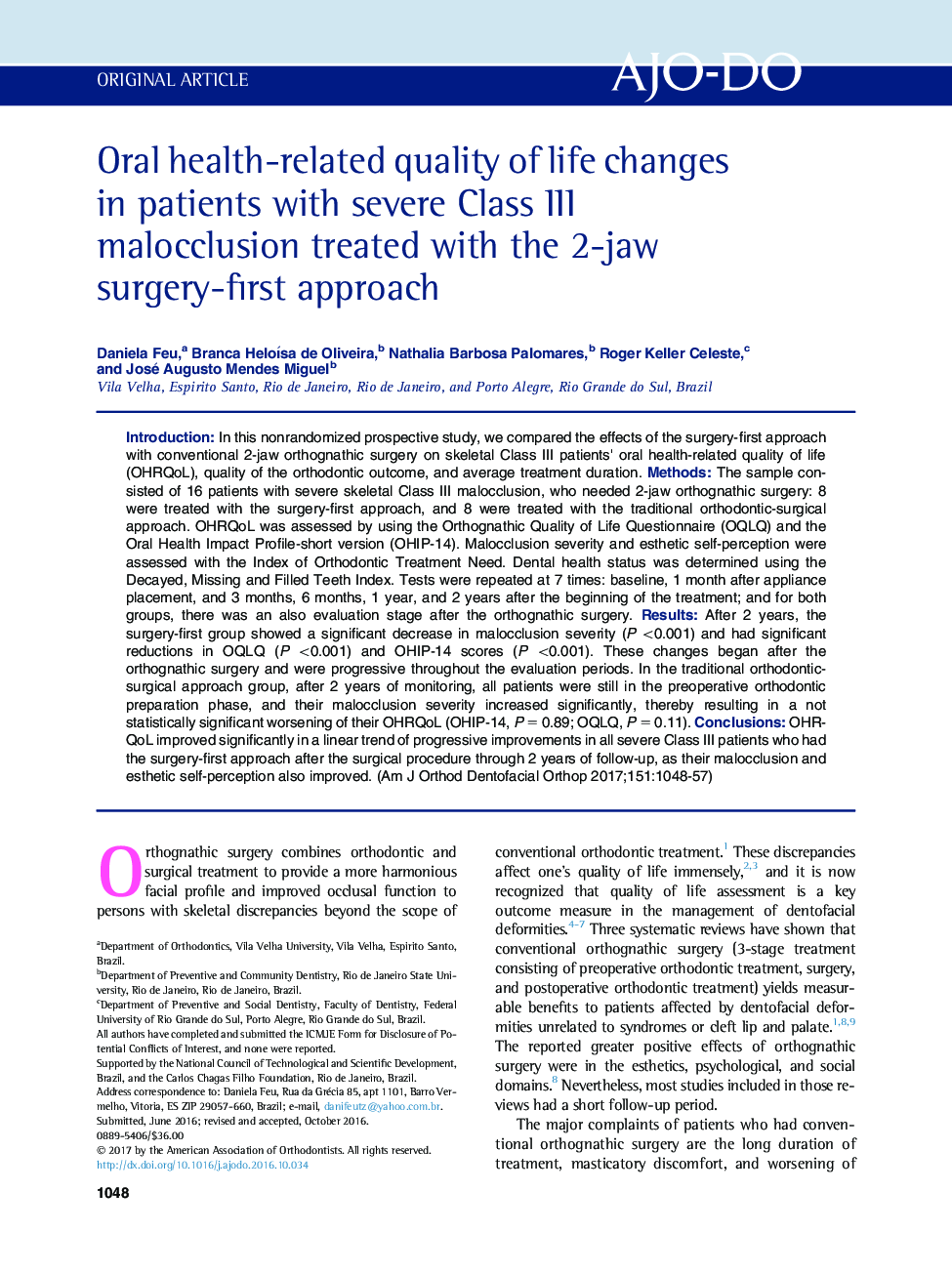| Article ID | Journal | Published Year | Pages | File Type |
|---|---|---|---|---|
| 5637604 | American Journal of Orthodontics and Dentofacial Orthopedics | 2017 | 10 Pages |
â¢Surgery-first approach (SFA) in severe Class III patients improved OHRQoL scores in a linear trend over time.â¢Esthetics self-perception was significantly improved after surgery in SFA patients.â¢Despite the accelerating effect in SFA, 3 patients were not completed after 2 years probably due to initial malocclusion complexity.
IntroductionIn this nonrandomized prospective study, we compared the effects of the surgery-first approach with conventional 2-jaw orthognathic surgery on skeletal Class III patients' oral health-related quality of life (OHRQoL), quality of the orthodontic outcome, and average treatment duration.MethodsThe sample consisted of 16 patients with severe skeletal Class III malocclusion, who needed 2-jaw orthognathic surgery: 8 were treated with the surgery-first approach, and 8 were treated with the traditional orthodontic-surgical approach. OHRQoL was assessed by using the Orthognathic Quality of Life Questionnaire (OQLQ) and the Oral Health Impact Profile-short version (OHIP-14). Malocclusion severity and esthetic self-perception were assessed with the Index of Orthodontic Treatment Need. Dental health status was determined using the Decayed, Missing and Filled Teeth Index. Tests were repeated at 7Â times: baseline, 1Â month after appliance placement, and 3Â months, 6Â months, 1Â year, and 2Â years after the beginning of the treatment; and for both groups, there was an also evaluation stage after the orthognathic surgery.ResultsAfter 2Â years, the surgery-first group showed a significant decrease in malocclusion severity (PÂ <0.001) and had significant reductions in OQLQ (PÂ <0.001) and OHIP-14 scores (PÂ <0.001). These changes began after the orthognathic surgery and were progressive throughout the evaluation periods. In the traditional orthodontic-surgical approach group, after 2Â years of monitoring, all patients were still in the preoperative orthodontic preparation phase, and their malocclusion severity increased significantly, thereby resulting in a not statistically significant worsening of their OHRQoL (OHIP-14, PÂ =Â 0.89; OQLQ, PÂ =Â 0.11).ConclusionsOHRQoL improved significantly in a linear trend of progressive improvements in all severe Class III patients who had the surgery-first approach after the surgical procedure through 2Â years of follow-up, as their malocclusion and esthetic self-perception also improved.
